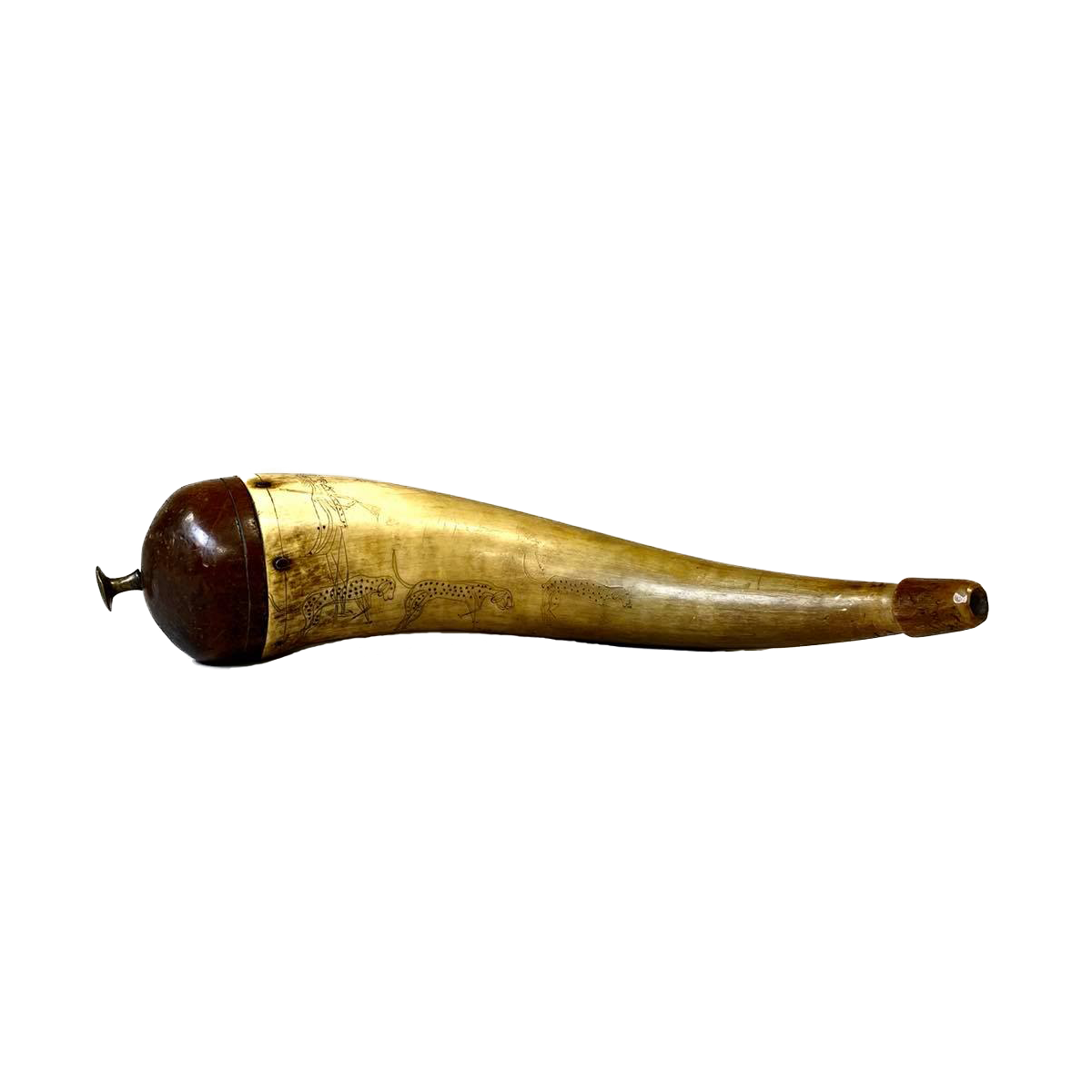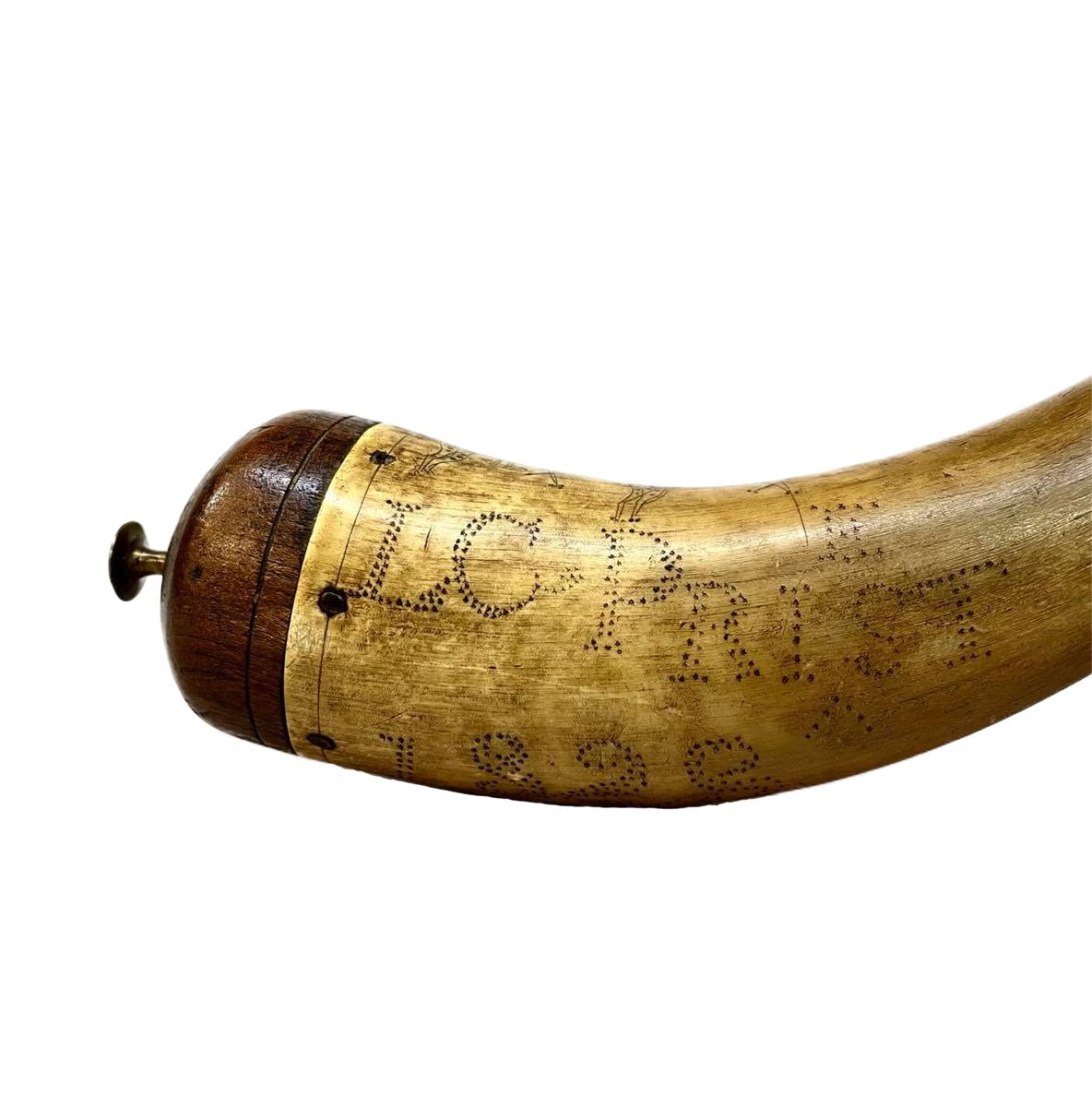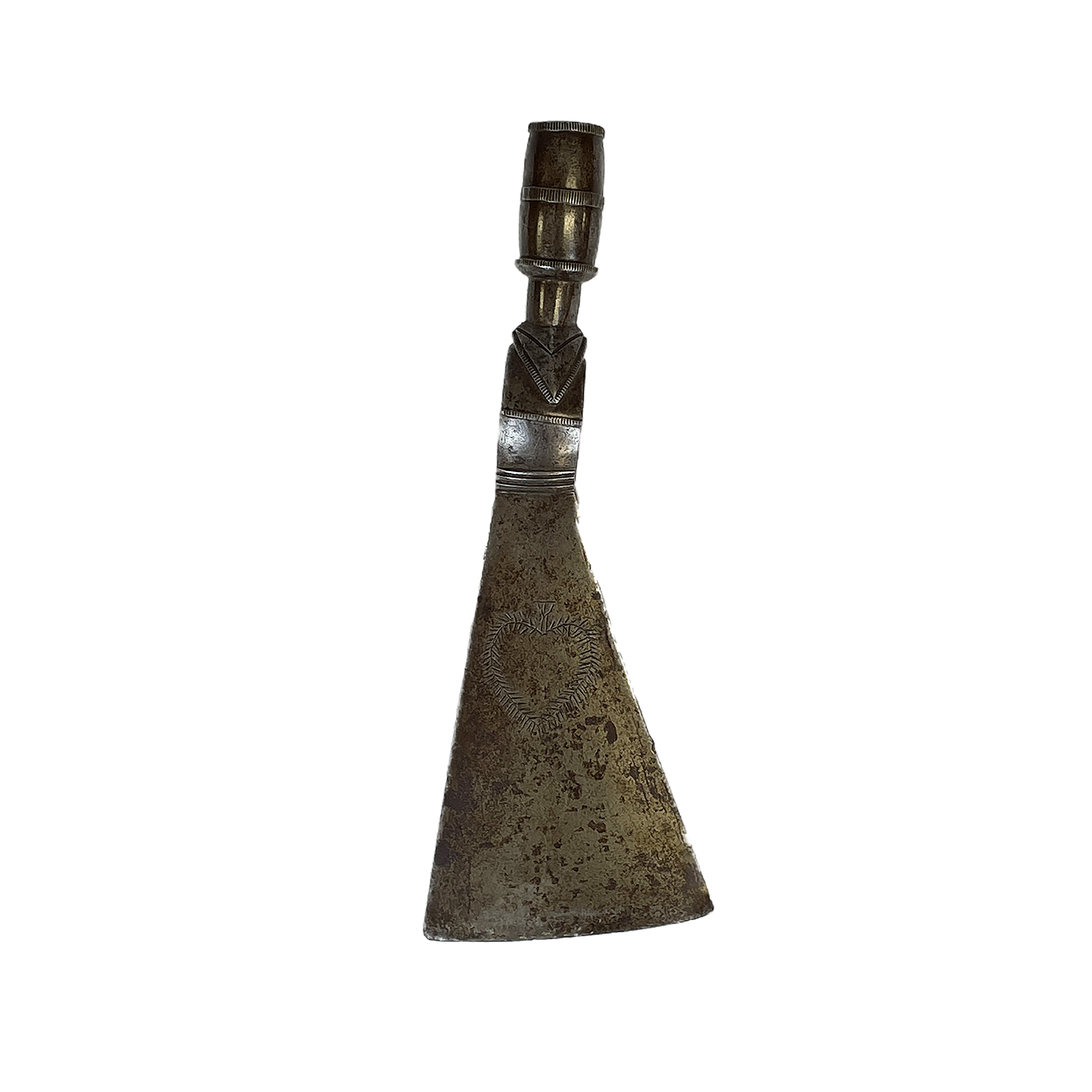Priest Family Powder Horn, 19th c.
Now on display in The Commonwealth: Divided We Fall.
Powder horns were popular and practical devices used to store gunpowder for soldiers, huntsmen, and frontiersmen in early American history. The shape and material of powder horns proved particularly useful for both loading and dispensing gunpowder as well as keeping the powder dry and safe from stray sparks.
Lewis Corbin Priest was born in Sideview, Kentucky in 1797, the son of settlers from Virginia. Later in life he moved to Putnam County, Indiana and served on the Union side of the Civil War, but this powder horn was made during his early life in Kentucky. According to family lore, the horn was crafted and engraved by a slave for L.C. Priest, which is why the “E” appears to be a later addition. The hunting scene serves as a decorative element depicting a common use for powder horns.
The powder horn was passed directly from L.C. Priest to his son upon his death in 1879, who subsequently passed it on to his son. In total, the horn passed through four generations of the eldest Priest men, until donated to the Frazier History Museum Collection.
Frontier Kentucky
Artifacts from Kentucky’s frontier period, from the earliest explorers and settlers to the turn of the 20th century.
Tomahawks, c. 1800-1850
The pipe tomahawk is an 18th century adaptation of the traditional tomahawk, or “tamahak” that blended Native American and European cultures. The head features a blade on one side with a pipe bowl on the other, serving two functions at once. This tool became important in trade between Europeans and Natives and explorers often presented them as gifts. The duality of the peaceful pipe and violent axe blade came to symbolize the complex relationship between native tribes and European settlers.
The use of hatchets or tomahawks continued in some military units until well into the Revolutionary War, carried by infantry and horsemen alike. Sometimes, the terms were virtually interchangeable. Tomahawks are also known to have been carried by French troops, and by British Light Infantry and Rogers’ Rangers in the French and Indian War. In the Revolution, foot soldiers often could not obtain bayonets for their muskets, but had access to tomahawks. As late as the Lewis and Clark Corps of Discovery, army troops on the expedition carried both bayonet and tomahawk, and tomahawks were also made for some of the natives encountered en route. Tomahawks were also common with mountain men and trappers. The tomahawk was thus probably the most widely used American staff weapon of the 17th through 19th century.
Here are a few examples of tomahawks dating from 1800-1850 in our permanent collection that are currently on display in The Commonwealth: Divided We Fall.
Sugar Caster, c. 1730
In 18th century America, sugar was a luxury ingredient only wealthy landowners could afford. This was certainly the case in frontier Kentucky. Sugar would travel up the Mississippi River from Louisiana, eventually reaching Kentucky through the Ohio River.
In order to protect the cone-shaped loaves imported from overseas from insects or theft, families kept sugar locked in decorative wooden chests. If a person was especially wealthy, sugar loaves would be placed inside silver casters such as this one (hence the curved cone shape) to break down the loaf into granules by shaking, or “casting” sugar over food and drink.
Lewis Corbin Priest (1797-1879), Sideview, Kentucky. Bone and wood powder horn with hand-carved drawing of a man with hunting rifles, dogs, and turkey. Inscription “L.C. Priest 1828.”









